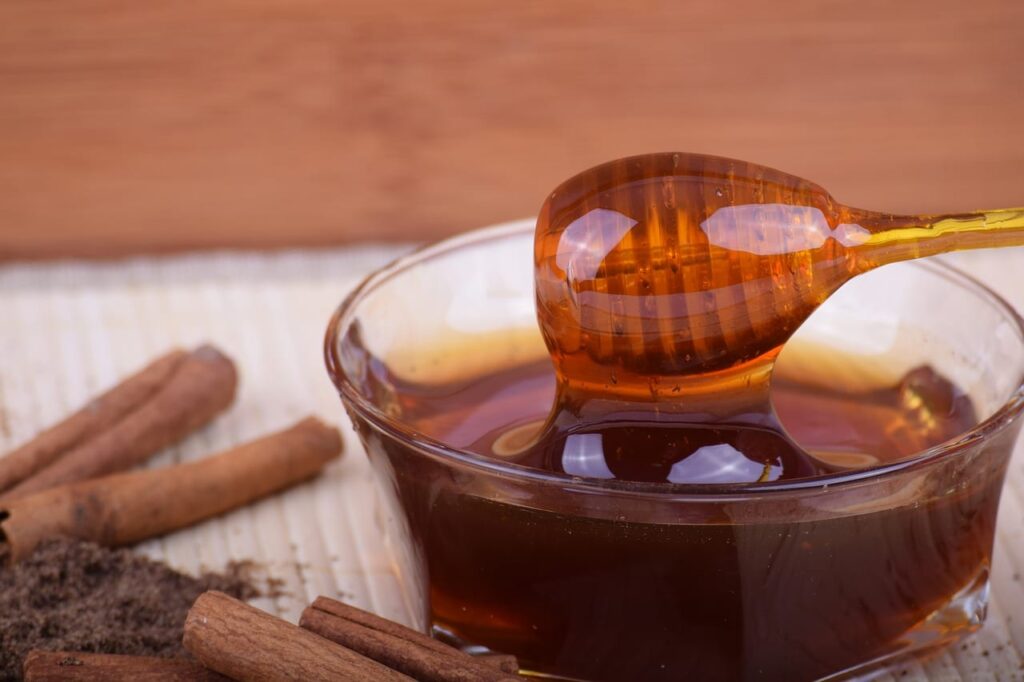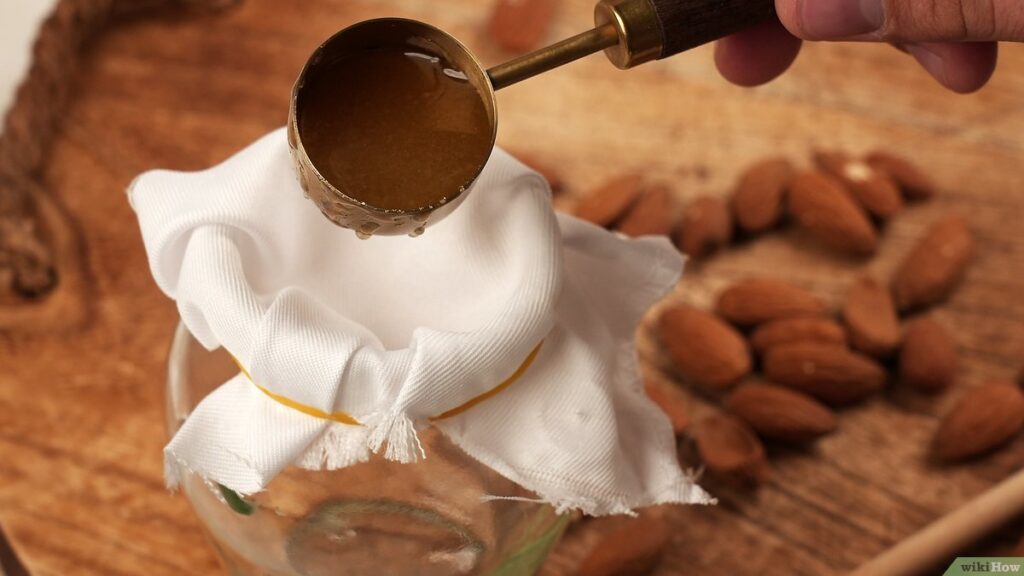
Are you tired of your honey crystallizing and becoming clumpy? Look no further! In this article, you will discover some crystal clear tips on how to prevent and reverse honey crystallization. Say goodbye to gritty honey and hello to the smooth and velvety texture you love. Whether you are a honey enthusiast or simply looking to preserve the quality of your sweet treat, these tips are sure to keep your honey crystal clear and delicious. So grab a spoon and let’s get started!

Understanding Honey Crystallization
What is honey crystallization?
Honey crystallization refers to the natural process in which honey transforms from a liquid state to a semi-solid or solid state. It occurs when the glucose in honey separates from the water content and forms crystals.
Why does honey crystallize?
Honey crystallization occurs due to the high concentration of sugar, mainly glucose, and the presence of other particles such as pollen. The glucose molecules arrange themselves into crystals over time, resulting in the solidification of the honey.
How does honey crystallize?
When honey is in a liquid state, the sugar molecules are dispersed uniformly in the water content. As time passes, the glucose molecules begin to stick together and form crystal nuclei. These crystal nuclei act as a template for further crystal growth, eventually leading to the overall crystallization of honey.
Preventing Honey Crystallization
Choose raw and unfiltered honey
To prevent or delay honey crystallization, it is best to choose raw and unfiltered honey. Raw honey retains its natural enzymes and pollen particles that help slow down the crystallization process.
Use low-temperature extraction methods
When extracting honey, using low-temperature methods helps preserve the natural enzymes and minimize the separation of glucose from the water content. This can help prolong the liquid state of honey.
Add a small amount of acid
Acids such as lemon juice or vinegar can be added to honey to lower its pH level. This acidity inhibits the growth of crystals and can help delay crystallization.
Store honey at the right temperature
Keeping honey at a temperature between 50°F and 70°F (10°C and 21°C) can help prevent crystallization. Avoid exposing honey to extreme temperatures, as fluctuations can accelerate the crystallization process.
Avoid exposure to air and moisture
To prevent honey from crystallizing, it is important to store it in airtight containers away from moisture. Exposure to air and moisture can speed up the crystallization process, so keeping honey tightly sealed is key.
Reversing Honey Crystallization
Gently heat the crystallized honey
To reverse honey crystallization, gently heating the jar of crystallized honey can melt the sugar crystals and return the honey to its liquid state. Place the jar in a warm water bath or use a gentle heating method, such as placing it near a warm stove.
Place the jar in warm water
Another method to reverse honey crystallization is to place the jar in warm water. The heat from the water will gradually soften the crystal formations, allowing the honey to become liquid again.
Use a double boiler
Using a double boiler is a safe method to heat crystallized honey. The indirect heat from the boiling water gently warms the honey, melting the sugar crystals without causing overheating or scorching.
Stir the honey slowly
As the honey warms up, gently stirring it can help distribute the heat evenly and break down the sugar crystals. Stirring slowly prevents the introduction of air bubbles, which can lead to faster re-crystallization.
Filter out any remaining crystals
After the honey has been heated and liquefied, it is advisable to filter it through a fine mesh or cheesecloth to remove any remaining crystal particles. This ensures a smooth and crystal-free honey consistency.
Other Tips and Tricks
Mix crystallized honey with liquid honey
If you prefer to keep some texture in your honey, you can mix the crystallized honey with a jar of liquid honey. The liquid honey will help soften the crystals and create a smoother consistency.
Add a touch of warm water
Adding a small amount of warm water to crystallized honey and gently stirring it can help loosen the sugar crystals and restore a more liquid-like consistency.
Use a honey dipper instead of a spoon
When scooping honey, using a honey dipper instead of a spoon helps minimize the introduction of air into the honey. This can slow down the crystallization process.
Avoid storing honey in the refrigerator
Refrigerating honey can accelerate the crystallization process. It is best to store honey at room temperature to maintain its liquid state for a longer period.
Choose the right container for storing honey
Using glass jars or containers for storing honey is recommended. Plastic containers may have microscopic pores that can allow air and moisture to penetrate, potentially speeding up crystallization.

Benefits of Preventing Honey Crystallization
Preserves the original texture of honey
By preventing honey crystallization, the original liquid texture of the honey is maintained. This can be particularly desirable for some culinary and consumption purposes.
Helps retain the nutritional properties
Preventing crystallization can help retain the natural enzymes and beneficial components present in honey. These compounds contribute to the nutritional value of honey and are better preserved in its liquid form.
Maintains the natural flavors
Honey in its liquid state tends to have a more pronounced, distinct flavor profile compared to crystallized honey. By preventing crystallization, the natural flavors of honey are preserved.
Enhances the visual appeal of honey
Liquid honey has a visually appealing, glossy appearance. By preventing crystallization, honey can be presented in its original liquid form, enhancing its overall visual appeal.
Improves the overall honey consumption experience
The smooth and pourable consistency of liquid honey makes it easier to use in various culinary applications. By preventing crystallization, the overall consumption experience of honey is improved.
Popular Myths About Honey Crystallization
Crystallized honey is spoiled or expired
Crystallized honey is not a sign of spoilage or expiration. It is a natural process that occurs due to the composition and concentration of sugars in honey.
Crystallized honey is adulterated
Crystallization is not an indication of honey adulteration. Both pure and adulterated honey can crystallize. The crystallization process depends on the natural properties of the honey.
All types of honey crystallize at the same rate
Different types of honey have varying levels of glucose and fructose, which can affect their crystallization rates. Therefore, crystallization rates can vary depending on the honey’s botanical origin.
Crystallization is a sign of poor quality honey
Crystallization in honey does not indicate poor quality. Many high-quality honeys crystallize naturally. The quality of honey should be assessed based on factors such as purity, taste, and origin.
Crystallization cannot be reversed
Contrary to popular belief, honey crystallization can be reversed using gentle heating techniques or other methods mentioned earlier. Crystallized honey can be restored to its liquid state.

Common Factors Affecting Honey Crystallization
Botanical origin of the honey
The botanical origin of honey, such as the type of flowers from which the bees collect nectar, can influence its crystallization tendencies. Some types of honey crystallize more quickly than others.
Sugar composition and concentration
The composition and concentration of sugars, particularly glucose and fructose, in honey affect its crystallization rate. Higher glucose content leads to faster crystallization.
Temperature variations during storage
Fluctuations in temperature during honey storage can accelerate or decelerate the crystallization process. Stable storage temperatures can help maintain honey’s liquid state.
Presence of pollen particles
The presence of pollen particles in honey can act as nuclei for crystal formation, potentially speeding up the crystallization process. Filtering out pollen particles may slow down crystallization.
Exposure to light and air
Exposure to light and air can promote the oxidation of honey, potentially affecting its texture and accelerating crystallization. Protecting honey from these elements can mitigate crystallization.
Tips for Storing Honey to Prevent Crystallization
Keep honey in a cool and dark location
Storing honey in a cool and dark location helps maintain its liquid state. Heat and sunlight can speed up the crystallization process.
Seal the honey jar tightly
Ensure the honey jar is tightly sealed to prevent air and moisture from entering. Airtight containers help slow down the crystallization process.
Avoid storing honey near heat sources
Keeping honey away from heat sources such as stoves, ovens, or direct sunlight can help prevent the acceleration of crystallization.
Ensure proper hygiene and cleanliness
Maintaining proper hygiene and cleanliness when handling honey can minimize the introduction of foreign particles that can trigger crystallization.
Use proper pouring techniques
When pouring honey, avoid allowing it to come into contact with the jar’s rim or any surfaces that might introduce impurities. This helps maintain honey’s quality and delay crystallization.

Honey Crystallization vs. Granulation
Definition of honey crystallization
Honey crystallization refers to the natural process where honey transitions from a liquid state to a semi-solid or solid form as a result of the separation of sugar molecules.
Definition of granulation
Granulation refers specifically to the process of sugar crystal formation in honey, resulting in the solidification of the honey’s texture.
Differences between crystallization and granulation
Crystallization is a broader term that encompasses the formation of crystals in various substances, while granulation solely refers to the sugar crystal formation in honey.
Similarities between crystallization and granulation
Both crystallization and granulation involve the formation of solid structures, caused by the separation or organization of particles within a substance.
Impact of granulation on honey quality
Granulation does not affect the quality of honey. In fact, many honey lovers prefer the texture and spreadability of granulated honey. Granulated honey can still be enjoyed and used in various ways.
Commercial Strategies to Prevent Honey Crystal Formation
Heating honey at high temperatures
Commercial honey producers often heat honey at high temperatures to delay crystallization. However, this process can diminish the quality and alter the natural properties of honey.
Removing pollen and other impurities
Some commercial honey producers filter out pollen and other impurities from honey to extend its shelf life and delay crystallization. However, removing pollen particles can also reduce the honey’s nutritional value.
Adding stabilizers and anti-crystallization agents
To prevent crystallization, some commercial honey products may contain stabilizers or anti-crystallization agents. These additives help maintain the liquid state of honey for a longer period.
Microfiltration and pasteurization processes
Microfiltration and pasteurization are additional commercial strategies to prevent honey crystallization. These processes involve filtering honey and subjecting it to heat to delay the formation of crystals.
Using special packaging techniques
Certain packaging techniques can help slow down honey crystallization. Packaging honey in containers with reduced exposure to air and moisture can extend its shelf life and delay crystallization.
In conclusion, understanding honey crystallization is essential for both consumers and producers. By knowing the factors that influence crystallization and employing the appropriate prevention and reversal methods, honey can be enjoyed in its desired form. Whether you prefer liquid honey or appreciate the unique texture of granulated honey, these tips and tricks will help you make the most of this sweet and versatile natural product. So go ahead, savor the golden goodness and explore the wonderful world of honey!
